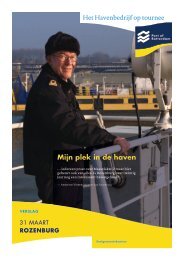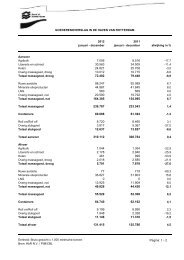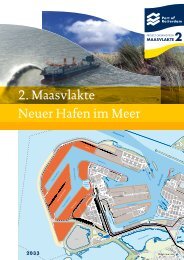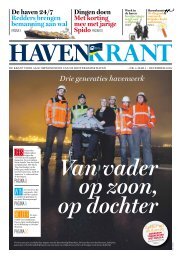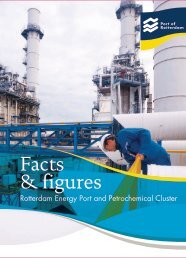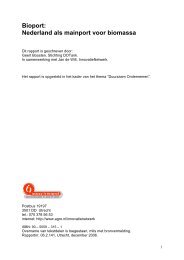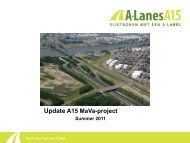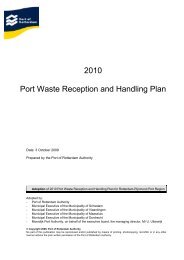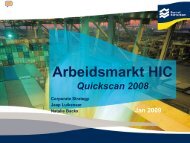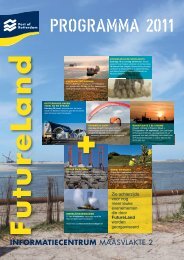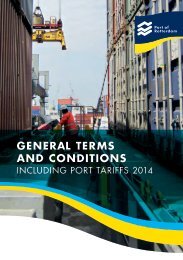PATHWAYS TO A CIRCULAR ECONOMY - Port of Rotterdam
PATHWAYS TO A CIRCULAR ECONOMY - Port of Rotterdam
PATHWAYS TO A CIRCULAR ECONOMY - Port of Rotterdam
Create successful ePaper yourself
Turn your PDF publications into a flip-book with our unique Google optimized e-Paper software.
The <strong>Rotterdam</strong>/Delta region is now the crossroads forimporting primary metals and exporting used electronicproducts and scrap metal to Asia and Africa. With theknow-how and experience available in the region, businessactivities to change or combine streams and further closethe cycle <strong>of</strong> copper and other metals can be developed.The pathway to a circular economy in the metals sectormodel is at stage 3 in the evolutionary model. In the model,up to 60 percent <strong>of</strong> e-waste is recycled. From a total <strong>of</strong>392,000 tonnes, only 38,000 tonnes end up in residualwaste and is sent to incineration. Copper is not onlycollected as a metal, it re-enters the market in refurbishedproducts and refurbished components. Close cooperationbetween parties leads to a higher rate <strong>of</strong> copper reuse.The circular economy model for copper in the metalssector is based on the following principles <strong>of</strong> a circulareconomy:• Minimise the use <strong>of</strong> inputs and eliminate wastes andpollution: Component and product manufacturers arereducing the use <strong>of</strong> virgin copper by increasing takeback <strong>of</strong> supplied products. Cooperation withspecialised refurbishers supports this.• Maximise the value created at each stage:Manufacturers create additional value through sales <strong>of</strong>refurbished products while component suppliers findnew sales opportunities through this channel.• Manage resource flows: WEEE collection is stimulatedby incentives aimed at users. Recycling schemescollect more e-waste and informal recyclers followregulations. This results in higher quality recycling inmore closed loops.• Establish mutually beneficial relationships: Componentproducers, manufacturers and recyclers benefit fromknowledge sharing. Better design helps to makerecycling easier, building new mutually rewardingbusiness models with network partners.The model shows how the leakage <strong>of</strong> copper in WEEE canbe reduced by the cooperative efforts <strong>of</strong> different parties inthe EEE cycle. It starts with increased e-waste collection,which depends on (re)manufacturers and refurbishershaving closer communication with users. Recyclingschemes need to intensify current activities and as a result,the e-waste ending up in incineration – which currently43/73PORT OF ROTTERDAM / RABOBANK<strong>PATHWAYS</strong> <strong>TO</strong> A <strong>CIRCULAR</strong> <strong>ECONOMY</strong>



